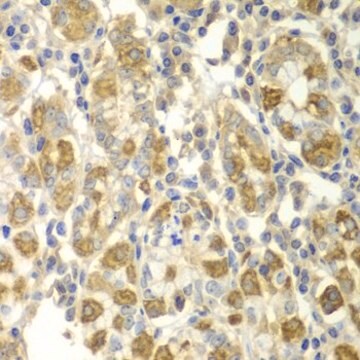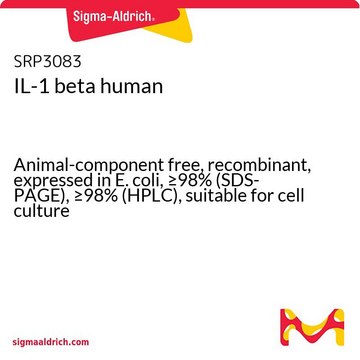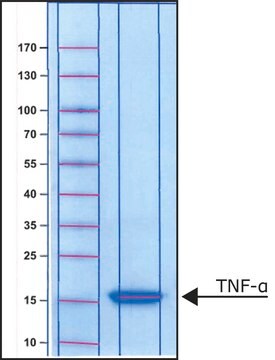T2824
Monoclonal Anti-Tumor Necrosis Factor-α antibody produced in hamster
~2 mg/mL, clone TN3-19.12, purified immunoglobulin, buffered aqueous solution
Synonym(s):
Anti-TNF-α
About This Item
Recommended Products
biological source
hamster
Quality Level
conjugate
unconjugated
antibody form
purified immunoglobulin
antibody product type
primary antibodies
clone
TN3-19.12, monoclonal
form
buffered aqueous solution
species reactivity
rat, mouse
packaging
antibody small pack of 25 μL
concentration
~2 mg/mL
technique(s)
immunoprecipitation (IP): suitable
indirect ELISA: suitable
microarray: suitable
neutralization: suitable
western blot: 0.25-0.5 μg/mL using recombinant mouse TNF-α
UniProt accession no.
shipped in
dry ice
storage temp.
−20°C
target post-translational modification
unmodified
Gene Information
mouse ... Tnf(21926)
rat ... Tnf(24835)
General description
Specificity
Immunogen
Application
- immunoblotting
- enzyme-linked immunosorbent assay (ELISA)
- immunoprecipitation
- neutralization
Biochem/physiol Actions
Physical form
Disclaimer
Not finding the right product?
Try our Product Selector Tool.
Storage Class Code
10 - Combustible liquids
WGK
WGK 3
Flash Point(F)
Not applicable
Flash Point(C)
Not applicable
Certificates of Analysis (COA)
Search for Certificates of Analysis (COA) by entering the products Lot/Batch Number. Lot and Batch Numbers can be found on a product’s label following the words ‘Lot’ or ‘Batch’.
Already Own This Product?
Find documentation for the products that you have recently purchased in the Document Library.
Our team of scientists has experience in all areas of research including Life Science, Material Science, Chemical Synthesis, Chromatography, Analytical and many others.
Contact Technical Service






